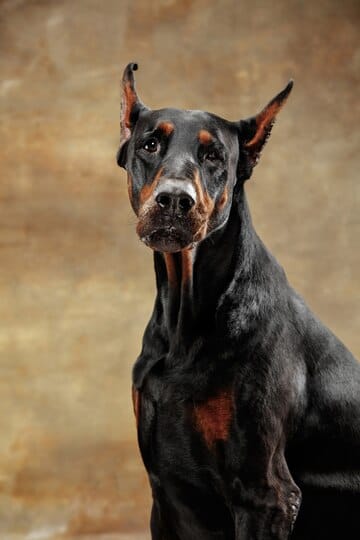- Introduction: Why Poodles Are the Talk of the Town 🗣️
- The Basics: What Does Hypoallergenic Really Mean? 🧬
- The Poodle’s Unique Coat: Nature’s Allergy Shield? 🛡️
- The Science Behind Poodle Allergies: It’s Not Just About the Coat 🔬
- Are All Poodles Created Equal? Variations Within the Breed 🐩🐩🐩
- Living with a Poodle: Practical Tips for Allergy Sufferers 🏠
- When Poodles Aren’t Enough: Dealing with Severe Allergies 🏥
- The Future of Hypoallergenic Dogs: What’s on the Horizon? 🔮
- Frequently Asked Questions About Poodles and Allergies 🤔
- Q: Are poodles 100% hypoallergenic?
- Q: Do poodles shed at all?
- Q: Are poodle mixes (like Labradoodles) as hypoallergenic as purebred poodles?
- Q: Can I become allergic to my poodle over time?
- Q: How often should I groom my poodle to minimize allergens?
- Q: Can puppies cause more allergic reactions than adult poodles?
- Q: Are white poodles more hypoallergenic than other colors?
- Q: Can allergy shots help me live with a poodle?
- Conclusion: The Poodle Perspective 🌟
Introduction: Why Poodles Are the Talk of the Town 🗣️
Poodles have long been the darlings of the dog world, not just for their intelligence and charm, but also for a rather unique trait: they’re often touted as hypoallergenic. But what does this really mean? Why are poodles considered hypoallergenic when other breeds aren’t? And is there more to this fluffy tale than meets the eye?
In this comprehensive guide, we’ll dive deep into the world of poodles and allergies. We’ll explore the science behind their hypoallergenic status, debunk some myths, and provide practical advice for allergy sufferers who dream of canine companionship. Whether you’re a longtime poodle enthusiast or just starting to consider bringing one of these curly-coated cuties into your home, this article will equip you with all the knowledge you need.
So, grab a cup of tea (and maybe an antihistamine, just in case), and let’s embark on this enlightening journey through the poodle paradox! 🐾
The Basics: What Does Hypoallergenic Really Mean? 🧬
Before we dive into the specifics of poodles, let’s clarify what we mean by “hypoallergenic.” Contrary to popular belief, hypoallergenic doesn’t mean completely allergy-free. Instead, it refers to something that’s less likely to cause an allergic reaction.
In the context of dogs, a hypoallergenic breed is one that typically produces fewer allergens than other breeds. But here’s the kicker: no dog is truly 100% hypoallergenic. Even poodles can cause allergic reactions in some people. The key is that they’re less likely to do so compared to many other breeds.
Quick Facts About Dog Allergies 📊
- Approximately 10-20% of the population worldwide is allergic to dogs
- Dog allergies are the 3rd most common animal allergy, after dust mites and cats
- Allergic reactions to dogs are typically caused by proteins found in the dog’s:
- Dander (dead skin cells)
- Saliva
- Urine
Now that we’ve got the basics covered, let’s explore why poodles, in particular, have earned this hypoallergenic reputation.
The Poodle’s Unique Coat: Nature’s Allergy Shield? 🛡️
One of the main reasons poodles are considered hypoallergenic is their distinctive coat. Unlike many other breeds, poodles have hair instead of fur. This might sound like a trivial distinction, but it makes a world of difference when it comes to allergies.
Fur vs. Hair: The Great Debate 🔬
Let’s break down the key differences:
| Characteristic | Fur | Hair |
|---|---|---|
| Growth cycle | Shorter | Longer |
| Shedding | More frequent | Less frequent |
| Texture | Often thicker | Often finer |
| Allergenic potential | Higher | Lower |
Poodles’ hair grows much like human hair, in a longer cycle. This means they shed less frequently and in smaller amounts compared to breeds with fur. Less shedding means fewer allergens released into the environment.
But there’s more to the story than just shedding. Poodle hair also tends to trap the dander (dead skin cells) that often causes allergic reactions. Instead of floating freely in the air or settling on surfaces, much of this dander remains trapped in the poodle’s coat until it’s brushed or washed out.
The Science Behind Poodle Allergies: It’s Not Just About the Coat 🔬
While the poodle’s unique coat plays a significant role in their hypoallergenic status, it’s not the only factor at play. Let’s delve into the scientific nitty-gritty of why poodles might be a better choice for allergy sufferers.
The Allergen Culprit: Can f 1 🦠
The main allergen produced by dogs is a protein called Can f 1. This protein is found primarily in dog saliva and dander. Here’s where things get interesting: studies have shown that poodles tend to produce less Can f 1 than many other breeds.
A 2012 study published in the Journal of Allergy and Clinical Immunology compared Can f 1 levels in various dog breeds. The results were eye-opening:
| Breed | Relative Can f 1 Level |
|---|---|
| Poodle | Low |
| Labrador Retriever | High |
| German Shepherd | Very High |
This doesn’t mean poodles don’t produce Can f 1 at all, but they do seem to produce less of it. This, combined with their low-shedding coat, contributes to their reputation as a more allergy-friendly breed.
The Saliva Factor: A Lick of Science 👅
While we often focus on dander when discussing dog allergies, saliva is another significant source of allergens. Here’s where poodles have another potential advantage:
- Drooling: Poodles are generally not heavy droolers. Less drool means less saliva spread around the environment.
- Grooming habits: While all dogs groom themselves to some extent, poodles aren’t known for excessive licking or grooming.
These factors can contribute to fewer saliva-based allergens in the environment, potentially reducing allergic reactions.
Are All Poodles Created Equal? Variations Within the Breed 🐩🐩🐩
When we talk about poodles, it’s important to note that there isn’t just one type. The breed comes in three officially recognized sizes, each with its own characteristics:
- Standard Poodle (over 15 inches tall at the shoulder)
- Miniature Poodle (10-15 inches tall)
- Toy Poodle (under 10 inches tall)
While all poodles share the basic hypoallergenic traits we’ve discussed, there can be some variations:
- Smaller poodles (Toy and Miniature) might be slightly better for allergy sufferers simply because they produce less dander overall due to their size.
- Individual dogs within the breed can vary in how much allergen they produce. This means that even among poodles, some individuals might be more “hypoallergenic” than others.
It’s also worth noting that there are poodle mixes, often called “doodles” (like Labradoodles or Goldendoodles), that are bred in an attempt to combine the hypoallergenic qualities of poodles with traits from other breeds. However, these mixes can be less predictable in terms of their coat type and allergen production.
Living with a Poodle: Practical Tips for Allergy Sufferers 🏠
If you’re an allergy sufferer considering a poodle, or if you already have one and are looking to minimize allergic reactions, here are some practical tips:
- Grooming is key 🧼: Regular brushing and bathing can significantly reduce the amount of dander in your poodle’s coat. Aim for brushing at least 2-3 times a week and bathing every 4-6 weeks.
- Create an allergy-free zone 🛏️: Designate certain areas of your home, particularly your bedroom, as dog-free zones. This gives you a safe space where allergen levels are lower.
- Invest in air purifiers 🌬️: High-quality HEPA air purifiers can help remove airborne allergens from your home.
- Vacuum frequently 🧹: Use a vacuum cleaner with a HEPA filter to remove allergens from carpets and furniture. Aim to vacuum at least twice a week.
- Wash your hands 🧼: After playing with or petting your poodle, wash your hands thoroughly to avoid transferring allergens to your face.
- Consider professional grooming ✂️: Regular professional grooming can help keep your poodle’s coat in top condition and minimize allergens.
- Dietary considerations 🥩: Some studies suggest that a high-quality diet rich in omega-3 fatty acids can help reduce the amount of dander a dog produces.
- Regular vet check-ups 👨⚕️: Keeping your poodle in good health can help minimize excessive shedding or skin problems that might exacerbate allergies.
When Poodles Aren’t Enough: Dealing with Severe Allergies 🏥
While poodles are a great choice for many allergy sufferers, they’re not a guaranteed solution for everyone. If you find that you’re still experiencing severe allergic reactions despite having a poodle and following the tips above, it’s time to consult with an allergist.
There are several treatment options available for dog allergies:
- Allergy medications: Antihistamines, nasal corticosteroids, and other medications can help manage symptoms.
- Immunotherapy: Allergy shots can help desensitize your immune system to dog allergens over time.
- Combination approaches: Often, a combination of environmental management, medications, and immunotherapy provides the best results.
Remember, your health should always be the top priority. If your allergies are severe and unmanageable, it might be necessary to consider rehoming your poodle, as difficult as that decision may be.
The Future of Hypoallergenic Dogs: What’s on the Horizon? 🔮
As our understanding of dog allergies grows, so does the potential for new solutions. Here are some exciting developments in the world of hypoallergenic dogs:
- Genetic testing: Scientists are working on genetic tests to identify dogs that produce lower levels of allergens. This could lead to more accurate breeding of hypoallergenic dogs.
- Allergen-reducing products: New products are being developed to reduce pet allergens in the home, including special shampoos and sprays.
- Customized treatments: Advances in immunotherapy may lead to more effective, personalized treatments for dog allergies.
- Engineered allergen-free dogs: While controversial, some scientists are exploring the possibility of genetically modifying dogs to produce fewer allergens.
While these developments are promising, it’s important to remember that the best approach to managing dog allergies is still a combination of choosing the right breed (like a poodle), proper care and grooming, and appropriate medical management when necessary.
Frequently Asked Questions About Poodles and Allergies 🤔
To wrap up our comprehensive guide, let’s address some common questions about poodles and their hypoallergenic qualities:
Q: Are poodles 100% hypoallergenic?
A: No dog is completely hypoallergenic. Poodles produce fewer allergens than many other breeds, but they can still cause allergic reactions in some people.
Q: Do poodles shed at all?
A: Yes, poodles do shed, but much less than many other breeds. Their hair tends to fall back into their coat rather than all over your furniture.
Q: Are poodle mixes (like Labradoodles) as hypoallergenic as purebred poodles?
A: Not necessarily. Poodle mixes can inherit coat characteristics from either parent, so their hypoallergenic qualities can vary.
Q: Can I become allergic to my poodle over time?
A: It’s possible to develop allergies at any time, even to a pet you’ve had for years. However, this is not specific to poodles and can happen with any breed.
Q: How often should I groom my poodle to minimize allergens?
A: Aim to brush your poodle 2-3 times a week and bathe them every 4-6 weeks. Professional grooming every 6-8 weeks can also be beneficial.
Q: Can puppies cause more allergic reactions than adult poodles?
A: Some people report stronger reactions to puppies. This could be due to puppy fur being different from adult coats, or because puppies tend to lick more.
Q: Are white poodles more hypoallergenic than other colors?
A: No, the color of a poodle’s coat doesn’t affect its hypoallergenic properties. This is a common myth.
Q: Can allergy shots help me live with a poodle?
A: Yes, immunotherapy (allergy shots) can be very effective in helping people build tolerance to dog allergens over time.
Conclusion: The Poodle Perspective 🌟
Poodles have rightfully earned their reputation as one of the most allergy-friendly dog breeds out there. Their unique coat, lower allergen production, and minimal shedding make them an excellent choice for many allergy sufferers who dream of canine companionship.
However, it’s crucial to remember that no dog is truly 100% hypoallergenic. While poodles are less likely to trigger allergies, individual responses can vary. If you’re considering bringing a poodle into your life, it’s always best to spend time with the breed first to see how you react.
With proper care, grooming, and management strategies, many people with dog allergies find that they can happily coexist with a poodle. These intelligent, affectionate, and versatile dogs offer so much more than just their hypoallergenic qualities – they’re wonderful companions that can bring joy, laughter, and love into your life.
So, if you’ve been hesitant about dog ownership due to allergies, a poodle might just be the key to unlocking a world of furry friendship. After all, sometimes the best things in life are worth a little sneeze! 🐾🤧💖
Remember, whether you’re a seasoned poodle parent or just starting to explore the possibility, the journey with these curly-coated companions is bound to be an adventure. Here’s to finding the perfect balance between allergy management and puppy love!































